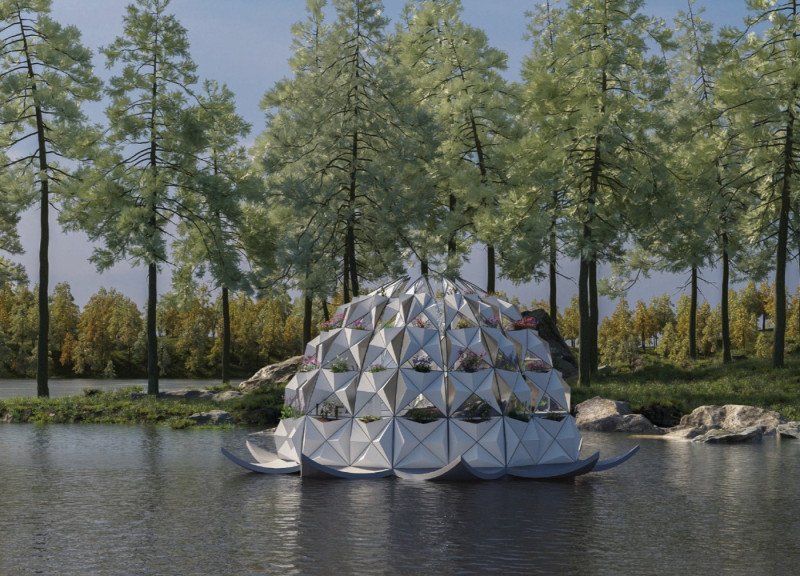5 key facts about this project
The Lotus is designed as a response to rising sea levels caused by climate change. Positioned in coastal areas or lakes, it serves as a modular microhome that floats on water. The design draws inspiration from the lotus flower, symbolizing both beauty and resilience. This dwelling aims to support a self-sufficient lifestyle while connecting with the natural environment.
Structural Framework
The structure utilizes a modular cube pontoon system as a floating platform. This allows it to remain stable and buoyant, even when water levels fluctuate. The design enables quick setup and avoids significant disruption to the surrounding ecosystem. By floating, it adapts effectively to coastal conditions, responding to the challenges of climate change.
Sustainability Features
A notable feature of The Lotus is its water harvesting system. It captures rainwater and seawater for everyday use, reducing the need for external water sources. This efficient use of resources aligns with sustainable living practices. Additionally, vegetation pots are integrated into the exterior, allowing for plant growth using the filtered water. This not only provides greenery but also fosters local biodiversity.
Energy Efficiency
Solar panels are installed on the roof to generate renewable energy for the home. This feature enhances the independence of The Lotus, making it less reliant on traditional energy systems. The integration of both water and energy solutions showcases a comprehensive approach to sustainable living, addressing multiple environmental concerns.
Interior Organization
Inside, The Lotus is carefully planned to optimize space for daily activities. It features separate areas for sleeping, living, working, cooking, dining, a bathroom, and storage. This thoughtful layout accommodates two occupants, balancing work and relaxation in a compact environment.
Every aspect of The Lotus reflects a commitment to practical and sustainable living, with lush vegetation pots adorning the exterior and enhancing both the look and ecological impact of the design.



















































